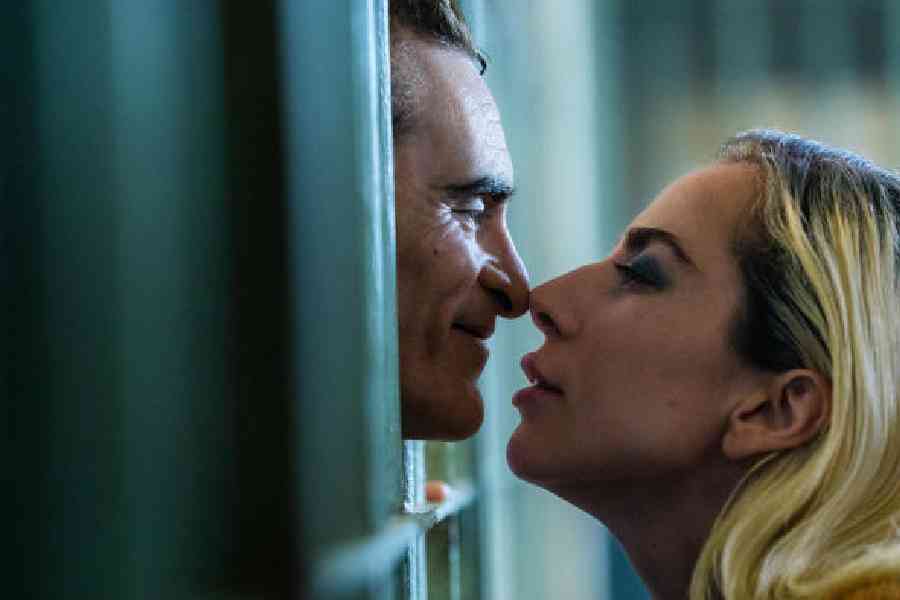Five years after Joker, director Todd Phillips returns with Joker: Folie a Deux, in which Arthur Fleck aka Joker, with Joaquin Pheonix reprising his Oscar-winning role, joins forces with Lee/ Harley Quinn, played by Lady Gaga. A chat with Phillips, ahead of the film’s release in Indian theatres on October 2.
How is this film a complement to the first Joker?
The simplest answer is that it’s a direct continuation. It picks up two years after the events of the first film, where we find Arthur (Fleck, played by Joaquin Phoenix) about to face the music for the crimes he has committed.
You and Scott Silver created this dark world for Arthur within this film. How then did you manage to find some light?
To me, Arthur always had light inside of him. He’s like a dandelion growing between the cracks of a broken sidewalk. His issue was that no one was able to see that light. In Folie a Deux, we liked the idea of exploring what would happen if someone actually saw that light. What would it awaken in Arthur?
What were the elements of this story that excited you the most about going back into Arthur’s world?
Joaquin and I loved Arthur from Day One of the first film. Usually, when shooting is wrapped, you want it to be over. Sometimes you are counting the days. With Joker, we didn’t want it to end. If Joaquin and I could have, we would have shot for three more months. We just kept finding new things to explore with a character like Arthur. So to answer this question — everything, really. We were excited about all the elements that took us back into Arthur’s world.
This is your second time working with Joaquin. How would you describe that partnership?
My partnership with Joaquin is really that of an intense collaboration. We start talking months before shooting and the conversation never really ends until we are done with post (production). All directors collaborate with their lead actors, or at least all the good directors do, but what Joaquin and I have feels like even another level past that.
What is Arthur’s relationship to Joker in this film and how has it evolved from the first film?
Arthur’s relationship with Joker is similar to the first film — it is tenuous at best. We are not sure if Joker represents Arthur taking off his mask or putting it on. In other words, is Joker really just the shadow self of Arthur? Or is it the other way around?
What does Lady Gaga bring to the role of Lee?
Gaga has always seemed like sunlight to me. She has magic in her. And besides the obvious fact that she ‘brings music with her,’ she also brought an intense vulnerability to Lee, and I think that’s the key. She had to appear to be as open, as empathetic and as damaged as Arthur.
You have a dream HOD team — Lawrence Sher (cinematography), Mark Friedberg (production design), Arianne Phillips (costume design), Jeff Groth (editor), Nicki Ledermann (make-up), Kay Georgiou (hair), Steve Morrow (sound design). Talk about how you collaborate with great artisans to realise your vision for the film?
There is just nothing like filmmaking. It is a giant collaboration in every sense of the word. The best part about doing it for as long as I have is that you form relationships with some of the most talented people in their field and you get to work with them over and over. I feel privileged every day I go to work knowing that essentially my ‘job’ is to hang out with talented friends and make something together.
Why is it so important to you to make films for the theatrical experience?
Movies are meant to be larger than life. They are meant to be seen on the largest and best screens available, with top-of-the-line projectors and sound systems — that’s just the way it is. That doesn’t mean that movies don’t ‘work’ on streaming, but they certainly don’t ‘work’ in the exact way that the filmmakers intended, because when you are making a film, you are always imagining it in a (hopefully) crowded theatre. That shared audience reaction is part of the film. It’s part of the experience. You just can’t get that at home. No matter how nice your TV is. And don’t even get me started on the compression that streaming services use.










